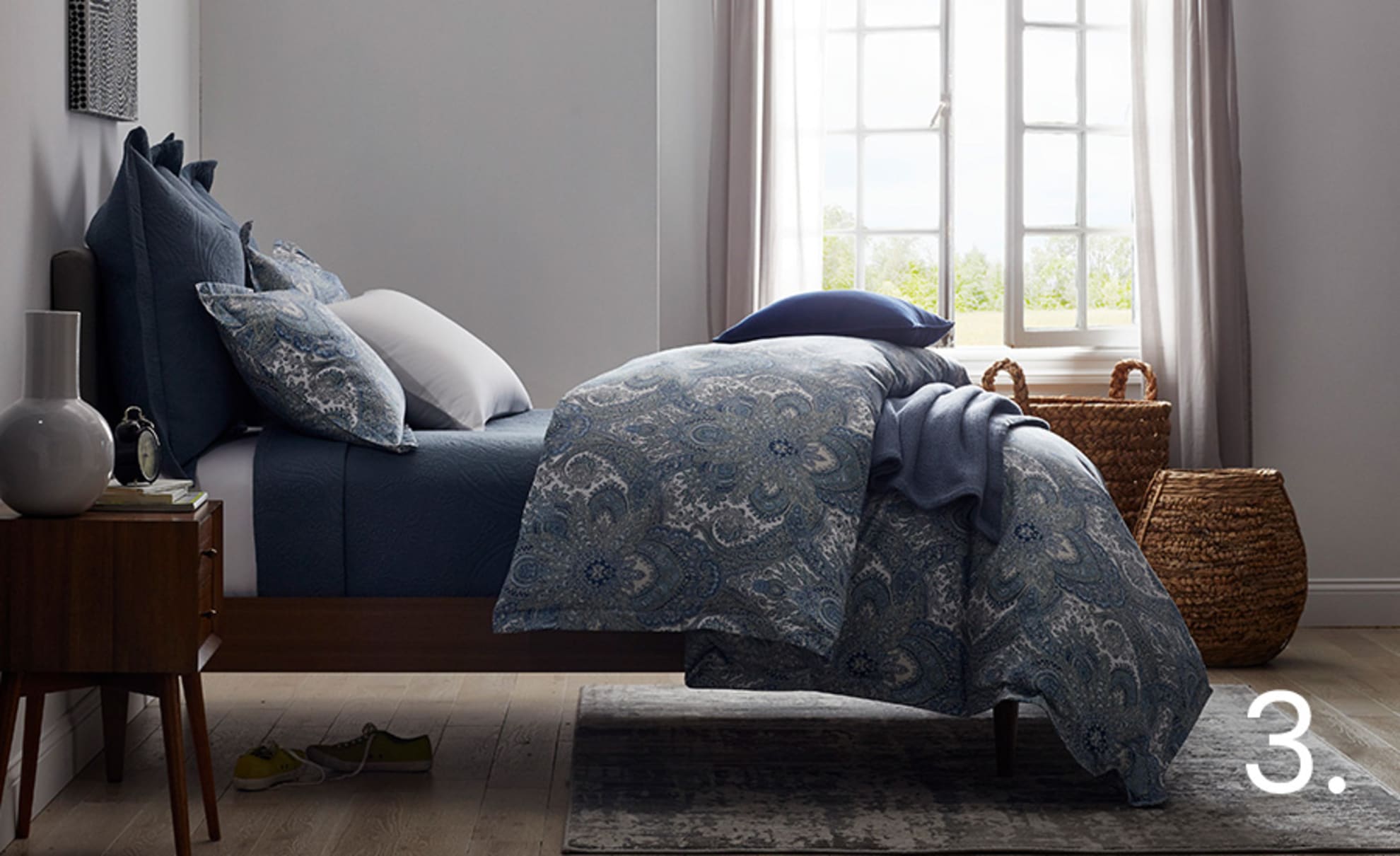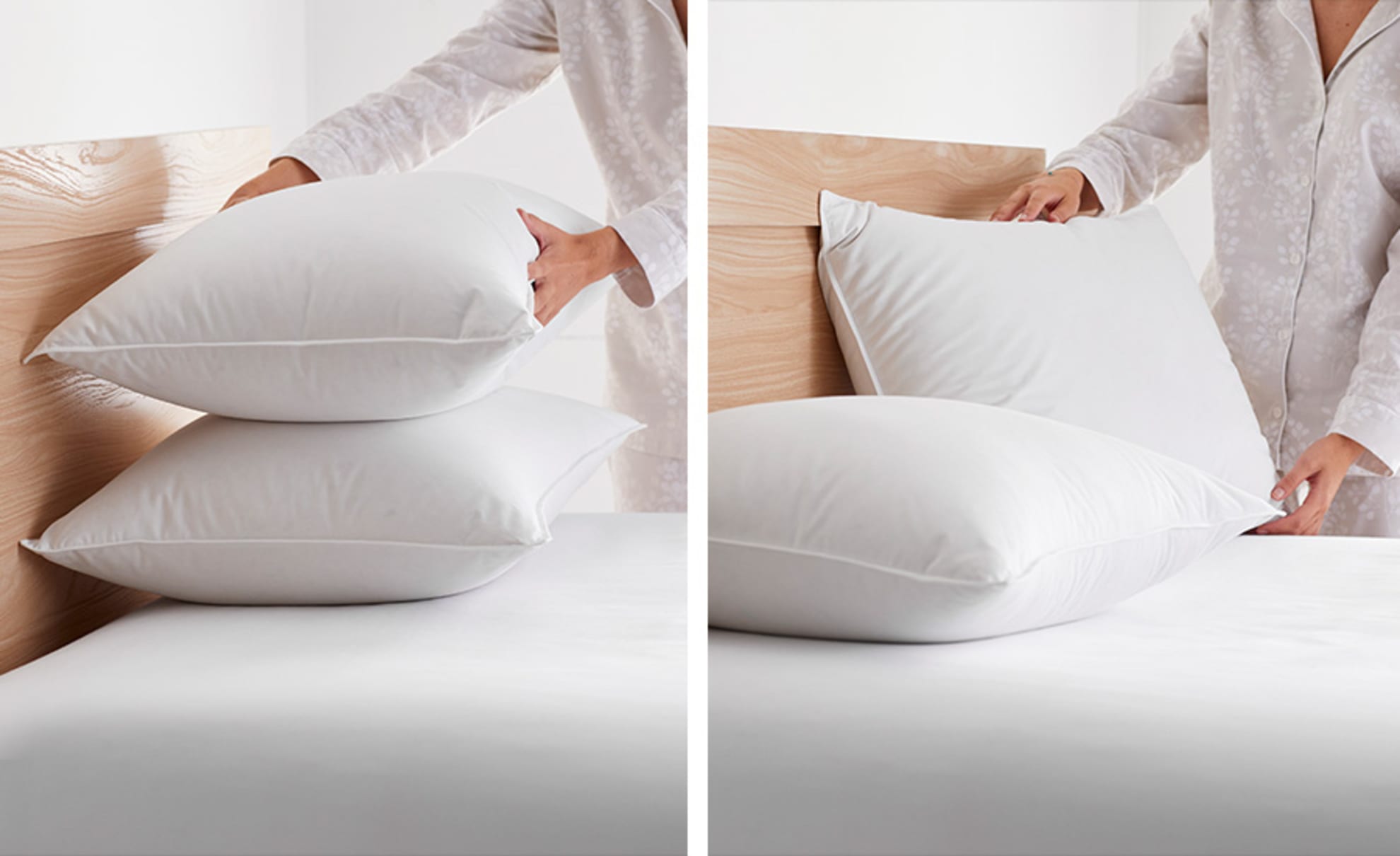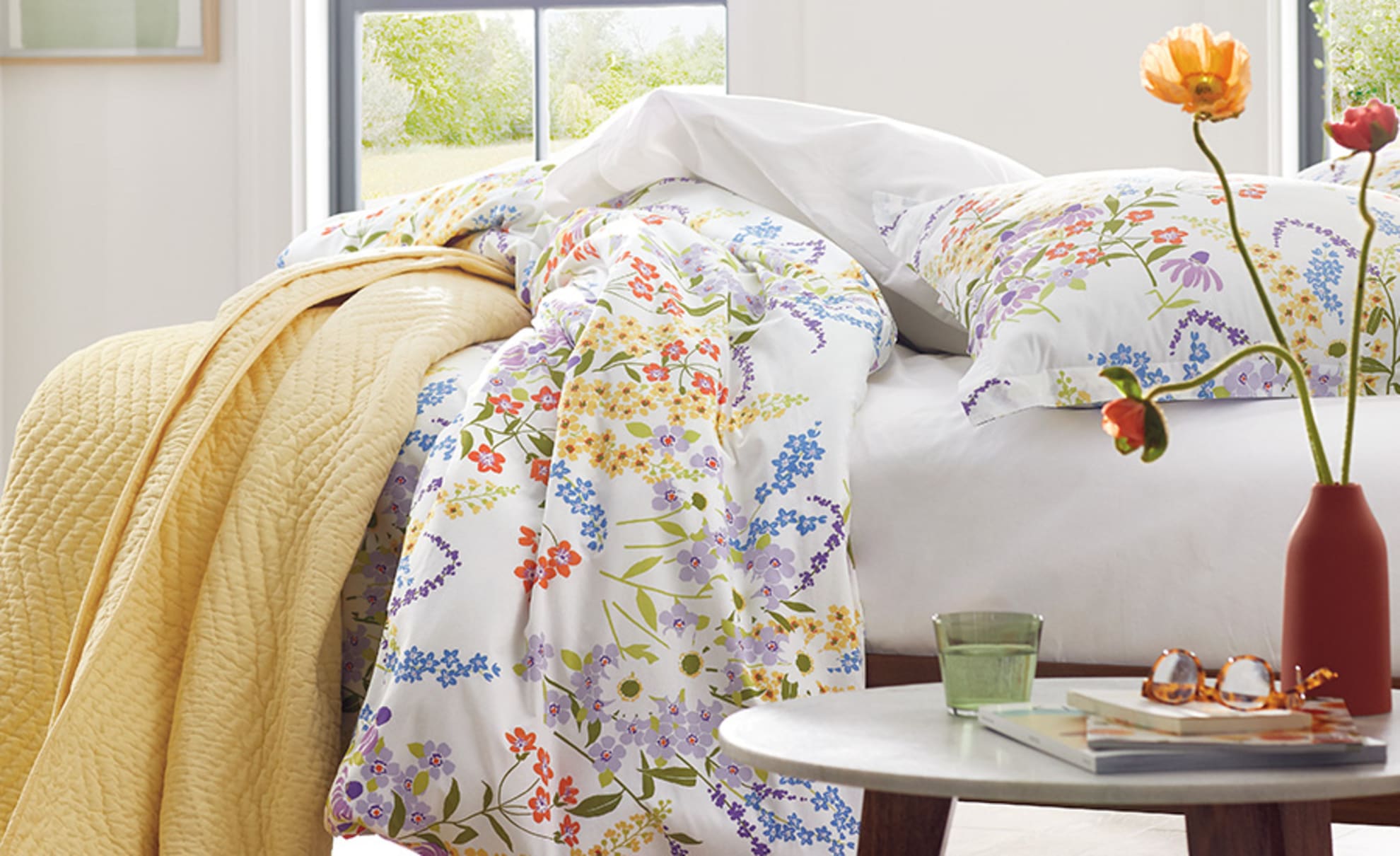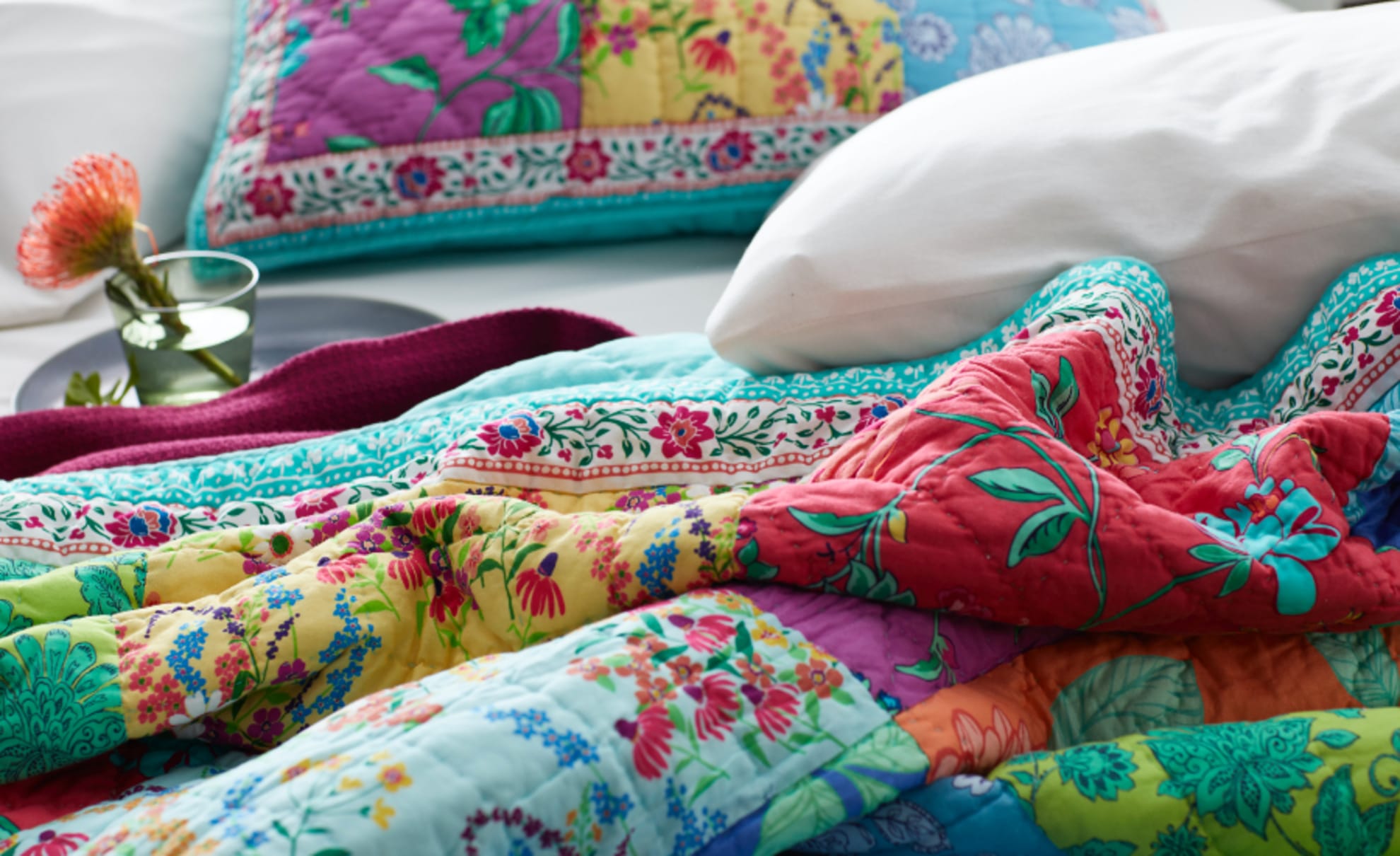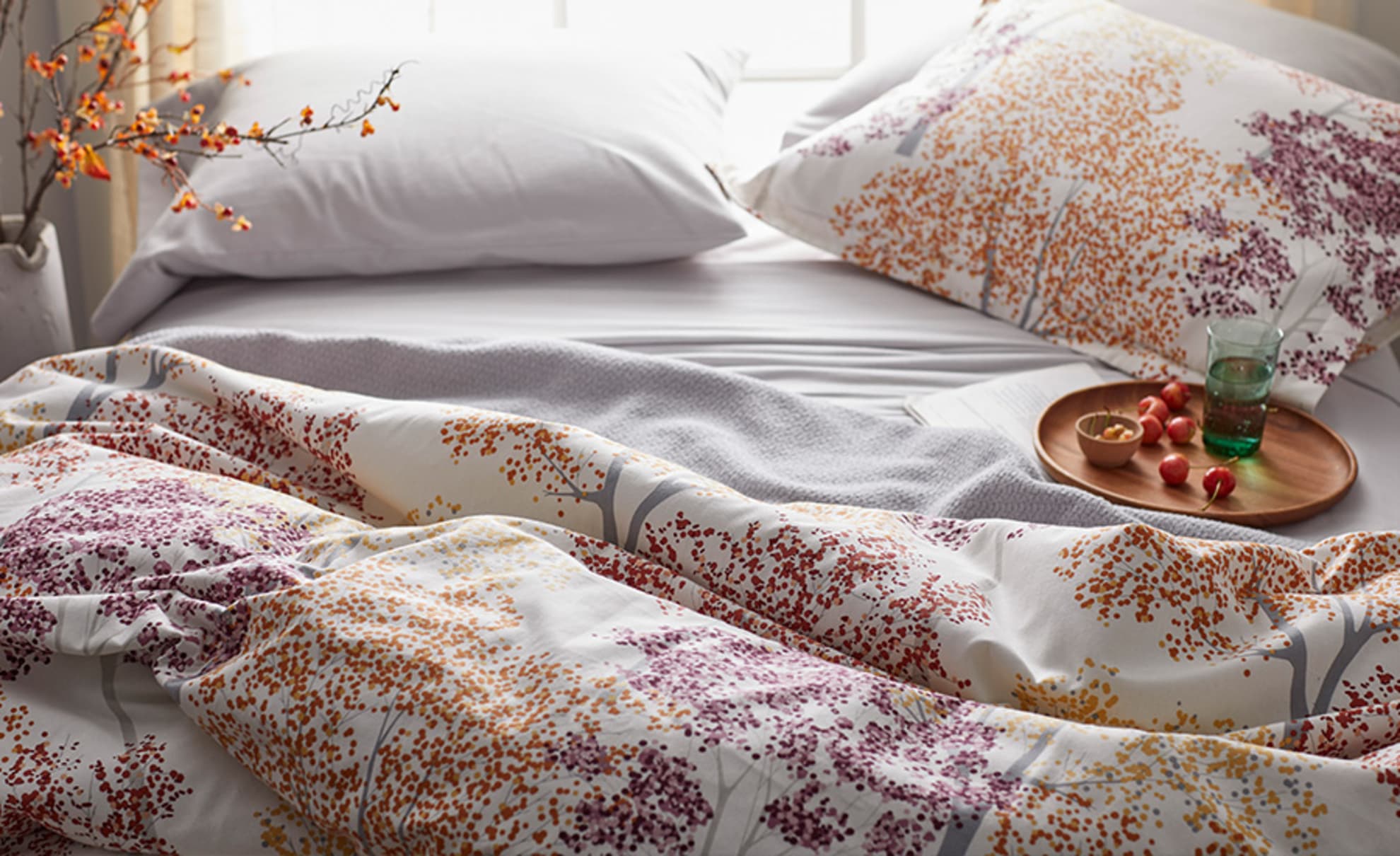When designing the look for your perfect bedroom, mix and match your bedding in layers that make you happy. Combine dreamy blue sheets with a robin’s egg medallion comforter, or pair a bold quilt with a jewel-tone solid throw, or choose a duvet cover featuring precise geometric patterns that coordinate with contemporary neutrals on your shams. With a little know-how, you can design a cohesive look you love, using textures that make you say “ahhh.” And when each day ends, you’ll relish slipping into your beautiful, welcoming bed.
How to Choose Bedding Colors
Your bed doesn’t exist in a vacuum—look at the furniture, walls, and general style of the bedroom for cues as to what colors will work best.
- Light wood and wicker furniture pairs well with lighter colors. Think Scandinavian hygge with sumptuous creams
and whites, or a beach-house palette that foregrounds tans, pastels, blues, and neutrals.
-
In a boho bedroom, you might lay a feast for the senses with rich jewel tones like peacock, mustard, paprika, teal,
or merlot.
- Understated, high-end look? Go for sophisticated tints or shades. Think sateen sheets and duvet covers that will
show off their sheen and drape.
- If you love a certain color, go monochromatic. Use different shades of the same color to give depth and interest:
instead of an all-violet bed, use pale lavender, violet, and deep indigo.
- In a kid’s room, think of their favorite color. Start with a duvet cover, comforter, or sheets that include that color
in a pattern they’ll love. Then you can repeat that color in the bedding and elsewhere in the room, and everything
will coordinate effortlessly.
How to Coordinate Color and Pattern
So you’ve decided on some bedding colors or styles. Next up: learn how to layer the bedding so it looks fantastic.
If you’re ready to get more adventurous, combine printed sheets or a patterned comforter with coordinating solids. Choose solid colors that harmonize with the print (all jewel tones, or all pastels) or pick up and repeat a color right from the pattern. You can also tie in color from a pattern elsewhere in the room—pull in lavender from the curtains, or mirror a shade of blue from the rug—without overwhelming. When you combine prints and coordinating solids, you won’t have the blank slate of white sheets, but you still have plenty of leeway for switching out patterns when you’re ready for a change.
Pairing multiple patterns requires the most orchestration of all. It’s essential to use a color that unifies the patterns so the effect is cohesive. Your floral-and-stripes combo might be tied together with a sunny yellow common to both. Bold medallions on the comforter and petite dots on the sheets? It works if they’re both black and white.
How to Layer a Magazine-Pretty Bed
If you enjoy the thought of a catalog-worthy bed welcoming you at the end of the day, then here’s some good news—it’s not tricky, and you don’t need a hotel housekeeping staff to get it done. Layer in color and pattern with the tips above, and use this simple bedding recipe, adjusting by season, for a perfect look and feel year-round:
- Fitted sheet
- Flat sheet—wrong-side-up, so the right side is revealed when it’s folded back
- Optional: Blanket to add warmth, color, and texture
- Top layer (coverlet, quilt, duvet, or comforter) according to season or preference
- Blanket folded over the bottom third
- Optional: A throw over the blanket at the foot for extra texture and color
How to Make the Bed
First, fold back the flat sheet and blanket at the top third of the bed. (Make sure the blanket is pulled up a little higher than the sheet to begin with, so that both are visible when you fold them back.) A thin quilt or coverlet can also fold back with this layer. If you’re using a duvet or comforter, fold it one-half to two-thirds of the way down the bed. Use an S-fold, so when you’re in bed, you can easily pull it up from the top edge. Leave the blanket at the bottom visible. If you’re using a throw, drape it casually, vertically at the foot of the bed—don’t fold it.
How to Layer Pillows
The rule of thumb is to match your standard pillowcases to the sheets and your shams to the quilt or duvet cover. One common way to arrange them is to lay your sleeping pillows flat, place the shams flat on top of those, and prop the Euro shams upright in front. Another option is to place all the pillows upright, with the shams in front of the standard pillowcases. Add a bolster or decorative throw pillow in front, and voila!
If you’re ready to branch out, experiment with a variety of pillow shapes and sizes.
When it comes to designing a look for your bedding, the right style will reflect your personality and taste. A beautiful bed is a comfortable haven, so use these ideas to coordinate a layered look that is just right for you.
How to Layer Your Bed for Seasonal Comfort
As the seasons change, bedding should change too—after all you wouldn’t wear a wool coat in July. The basic components for creating a magazine-worthy bed still apply, it’s just the fabrics and color palettes that change. For instance, think breathable fabrics and lighter colors for spring and summer, and cozier options and richer hues for the cooler months. Find tips below to create the perfect bed for winter, spring, summer, and fall.




